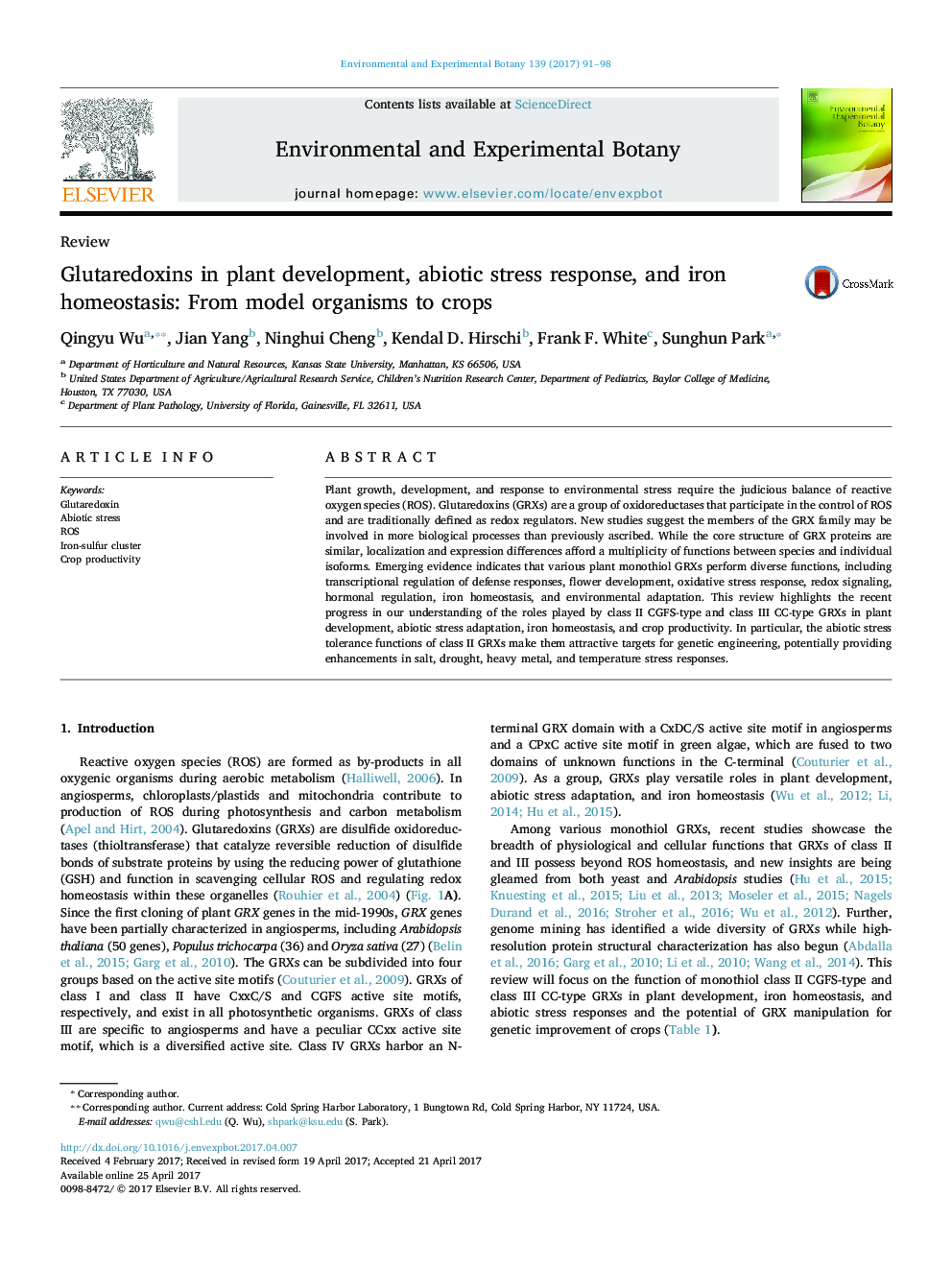| Article ID | Journal | Published Year | Pages | File Type |
|---|---|---|---|---|
| 5766717 | Environmental and Experimental Botany | 2017 | 8 Pages |
â¢The members of the glutaredoxin family may participate in more dynamic biological processes than previously attributed.â¢The abiotic stress tolerance functions of glutaredoxins make them attractive targets for crop improvement.â¢The mechanisms regarding how the glutaredoxins modulate the expression of stress-related genes remain to be explored.
Plant growth, development, and response to environmental stress require the judicious balance of reactive oxygen species (ROS). Glutaredoxins (GRXs) are a group of oxidoreductases that participate in the control of ROS and are traditionally defined as redox regulators. New studies suggest the members of the GRX family may be involved in more biological processes than previously ascribed. While the core structure of GRX proteins are similar, localization and expression differences afford a multiplicity of functions between species and individual isoforms. Emerging evidence indicates that various plant monothiol GRXs perform diverse functions, including transcriptional regulation of defense responses, flower development, oxidative stress response, redox signaling, hormonal regulation, iron homeostasis, and environmental adaptation. This review highlights the recent progress in our understanding of the roles played by class II CGFS-type and class III CC-type GRXs in plant development, abiotic stress adaptation, iron homeostasis, and crop productivity. In particular, the abiotic stress tolerance functions of class II GRXs make them attractive targets for genetic engineering, potentially providing enhancements in salt, drought, heavy metal, and temperature stress responses.
